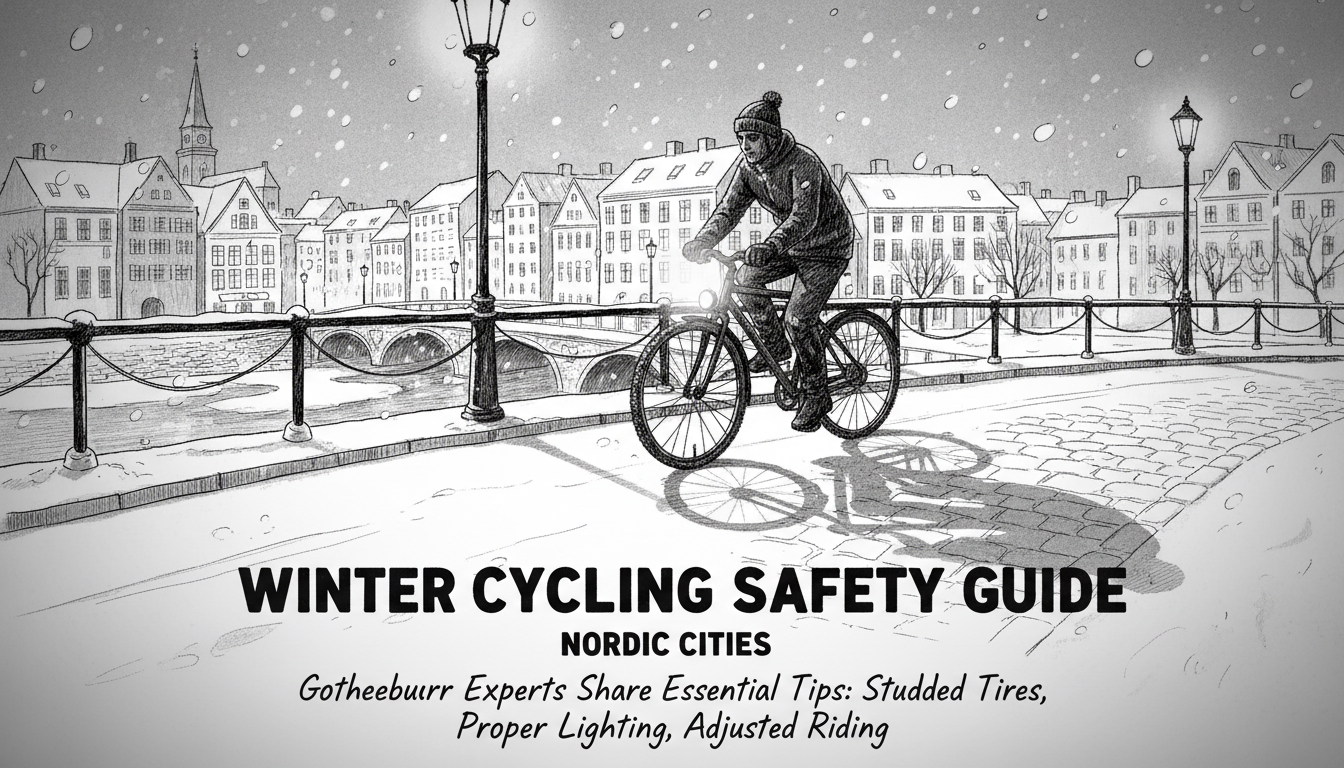Gothenburg faces its first snowfall this week, prompting safety warnings for determined cyclists. While many residents store their bicycles during winter, thousands continue cycling through snow and slush. Local cycling advocates emphasize that proper preparation makes winter cycling both possible and safe.
Kalle Hederos Eriksson from Gothenburg's cycling association advises riders to moderate their expectations. He suggests taking routes slower than usual and maintaining extra distance from other cyclists. Winter conditions hide potential hazards beneath the snow, including branches and ice patches that can cause accidents.
Visibility becomes crucial during dark, rainy, or snowy conditions. Traffic authorities recommend functioning bicycle lights and reflectors both front and rear. Cyclists should also wear reflective clothing themselves for maximum visibility. These simple measures significantly reduce collision risks during limited daylight hours.
Police officials note that accident risks increase during cold, slippery conditions. The most serious incidents often involve cyclists without helmets. While Swedish law doesn't mandate helmet use, officials emphasize their importance for injury prevention. A proper helmet can determine whether an accident results in minor injuries or serious trauma.
Bicycle maintenance requires extra attention in winter. Brakes and gears need regular checking since cold weather affects their performance. Cycling advocates recommend servicing the chain with fresh oil to ease winter pedaling. Proper maintenance prevents mechanical failures when cyclists need reliable equipment most.
Tire selection proves critical for winter cycling safety. Kalle Hederos Eriksson strongly recommends switching to studded tires, particularly on the front wheel. Losing front tire traction means complete control loss, while rear wheel slippage often allows recovery by placing a foot down. This simple equipment change dramatically improves stability on icy surfaces.
Certain Gothenburg locations demand extra caution during winter months. Bridges typically become slippery first due to cold air circulation above and below. Areas near water generally present higher ice risks. Cyclists should approach these locations at reduced speeds with heightened awareness.
Despite winter challenges, cycling advocates encourage continued bicycle use. Cycling provides reliable transportation regardless of weather conditions. While travel might proceed slower, cyclists avoid the traffic congestion affecting cars and public transport. This reliability makes bicycles practical for daily commuting throughout Nordic winters.
The key lies in balancing determination with realistic assessment. Cyclists should not overestimate their abilities while accounting for other road users' safety. With proper equipment and adjusted expectations, winter cycling remains viable across Swedish cities. Gothenburg's cycling infrastructure supports year-round bicycle use when riders adopt appropriate precautions.
Nordic cities increasingly recognize winter cycling as legitimate transportation. Municipalities invest in better winter maintenance of bicycle paths. This commitment reflects growing understanding that many residents rely on bicycles regardless of season. Proper preparation transforms winter cycling from daunting challenge to manageable routine.

